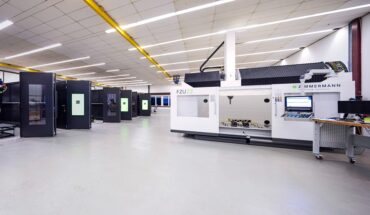And why 2D CAD is a key factor when assessing manufacturability.
DS SOLIDWORKS has sponsored this post.

Designing for manufacturability (DFM) is the creation of products that are functional and efficient to produce. This requires close collaboration between design and manufacturing teams and tools that make the process seamless. An essential element of this workflow is ensuring that designs are clear and production-ready.
Manufacturers rely on 2D CAD to translate complex ideas into straightforward technical drawings with accurate measurements and instructions. This makes it easy to communicate ideas with minimal effort. A well-prepared 2D plan reduces production risks and saves both time and resources. The straightforward nature of 2D CAD helps accelerate design cycles and improves coordination between teams.
When needed, 2D CAD can also integrate with 3D modeling software. Designers can start with a 2D layout and use it as the basis for creating 3D models in tools like SOLIDWORKS. This approach maintains consistency and allows smooth transitions between formats.
For additive manufacturing projects, the role of 2D CAD is just as critical. Even though 3D printing starts with a 3D model, the design process often begins with 2D layouts and technical drafts to establish accurate dimensions and details. This ensures the model is well-prepared for printing and enables quick iterations, reduced material waste and efficient prototyping.
2D CAD tools also support the development of complex geometric parts that traditional subtractive methods struggle to produce. Internal cooling channels or lightweight structures can be outlined in 2D and then translated into a 3D model for printing. The flexibility of 2D CAD, combined with the layer-by-layer approach of additive manufacturing, makes it possible to create intricate designs while streamlining the production process and minimizing errors — all without requiring multiple software platforms.
Effective design for manufacturability relies on clear communication between engineering and manufacturing teams. Teams can work together without barriers by using standard file formats and ensuring smooth data exchange between software like SOLIDWORKS or CATIA. This compatibility reduces errors and helps everyone stay aligned on the same design — avoiding costly delays and rework.
Collaboration between design and manufacturing teams is critical. Cloud-based CAD platforms offer flexibility and make it easy to share files and revisions in real time. This shared environment simplifies the handoff process and ensures everyone is working with the latest version of the design. When design changes are made, they are reflected across all associated files, keeping the project on track and preventing misunderstandings during production.
Best practices for optimizing designs for manufacturability include:
- Prioritize clear documentation and communication. Use 2D CAD to produce detailed technical drawings to communicate design intent to manufacturing teams. This minimizes misunderstandings and ensures everyone has the correct information.
- Leverage 2D CAD as the foundation for design. Begin with a well-prepared 2D layout to establish accurate dimensions and specifications before transitioning to 3D modeling. This approach helps maintain consistency and ensures that all necessary details are included early in the design process.
- Integrate 2D and 3D workflows. Utilize 2D CAD as a starting point for 3D designs, creating a smooth transition between formats and enabling better collaboration across platforms like SOLIDWORKS or CATIA. This integration simplifies modifications and keeps designs consistent, from 2D sketches to 3D models.
- Use standard file formats for seamless collaboration. Ensure that all design files, whether 2D or 3D, are compatible across different CAD platforms. This makes it easier to exchange data between teams and reduces errors caused by file conversion issues, enabling smoother collaboration between design and manufacturing.
- Adopt cloud-based CAD tools for real-time collaboration. Implement cloud-based CAD solutions to enable real-time file sharing, version control and seamless updates across teams. This ensures everyone works with the latest design version, reducing delays and simplifying the handoff process between design and manufacturing.
For those looking to optimize their engineering workflow, DraftSight provides powerful 2D CAD tools that connect with platforms like SOLIDWORKS and CATIA. In traditional manufacturing, or new techniques like 3D printing, DraftSight helps ensure your designs are straightforward, production-ready and easy to share. Try DraftSight yourself with a 30-day free trial.





